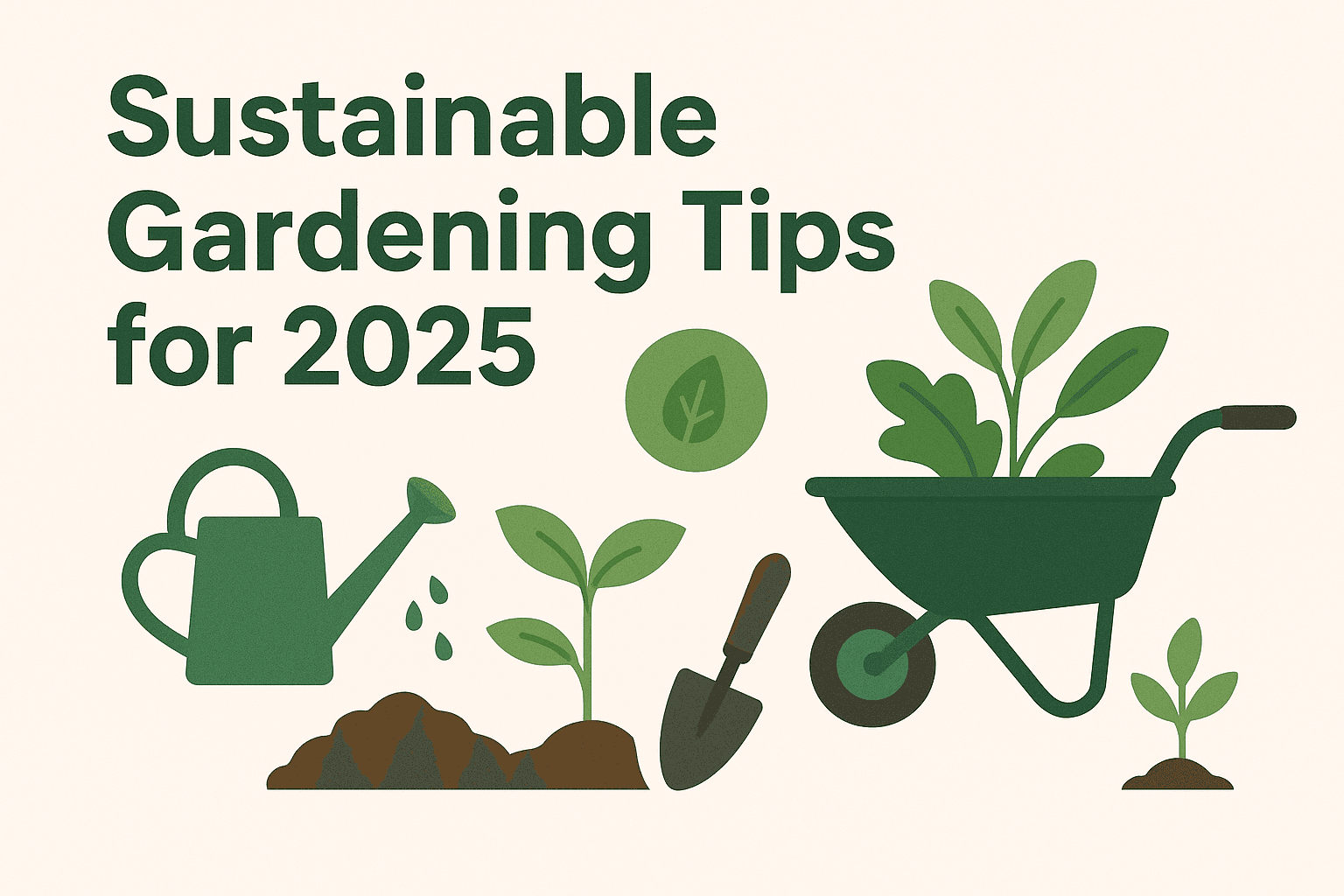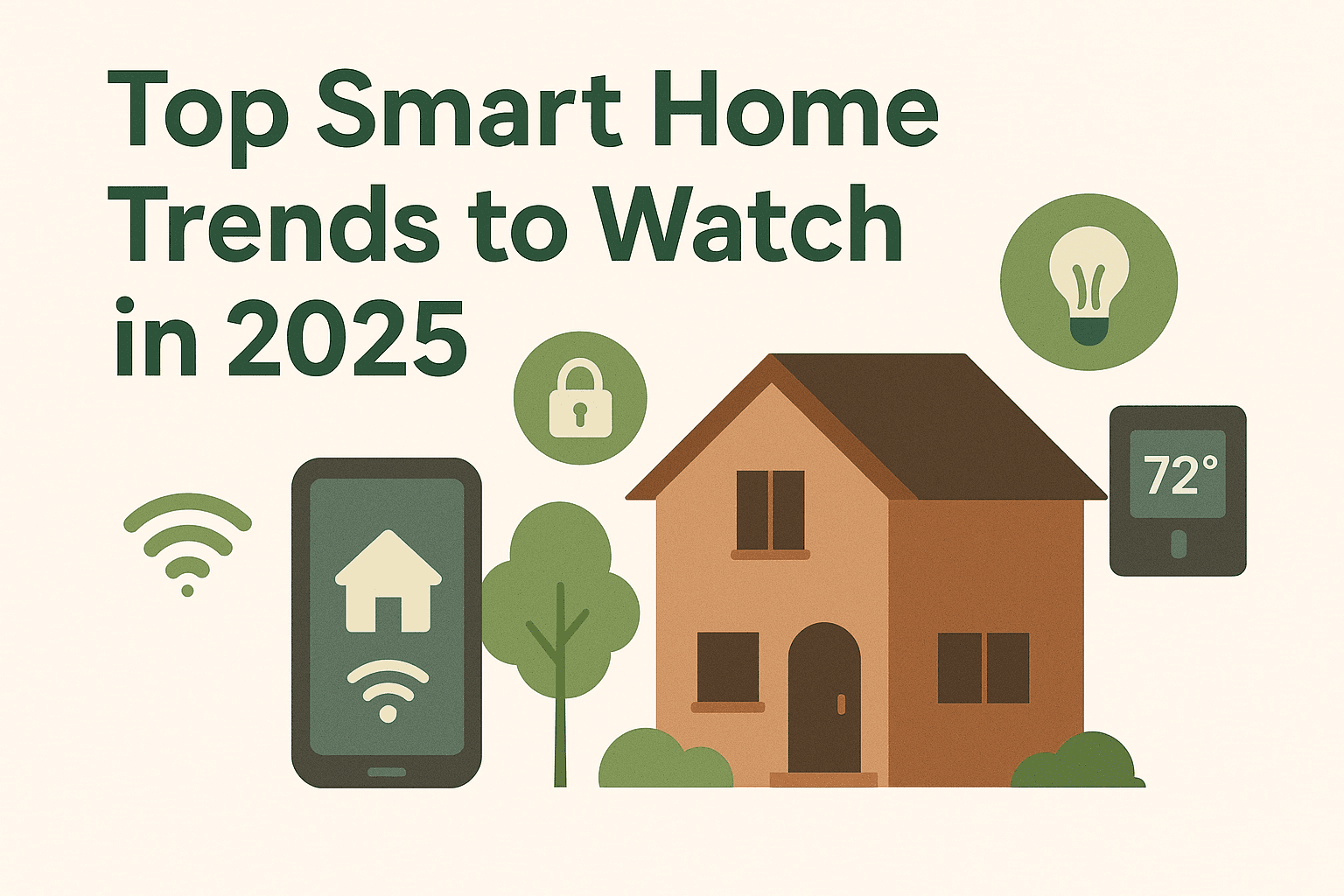Sustainable Gardening Tips for 2025

Sustainable gardening is the new normal in 2025. With changing climates and water restrictions, gardeners are turning to smart, eco-friendly techniques that save resources while creating vibrant outdoor spaces. This guide covers soil health, water-smart planting, seasonal care, and simple upgrades that make a big difference.
1. Water Wisely Use drip irrigation and moisture sensors to avoid overwatering. Rain barrels and greywater systems are common home upgrades that reduce municipal water use.
- Drip vs soaker hoses: Drip targets root zones for shrubs/veggies; soaker hoses suit beds and borders. - Smart controllers: Adjust schedules with weather data and soil moisture. - Mulch magic: 2–3 inches of mulch reduces evaporation and suppresses weeds.
2. Build Living Soil Healthy soil equals healthy plants.
- Add compost: 1–2 inches annually improves structure and fertility. - Avoid tilling: No‑till methods preserve microbial life and soil carbon. - Test and amend: Use a soil test to balance pH and key nutrients.
3. Native and Climate-Ready Plants Native species require less maintenance, attract pollinators, and withstand local extremes. Mix natives with climate-adapted ornamentals for year-round interest.
- Plant diversity: Aim for staggered blooms to support bees and butterflies across seasons. - Right plant, right place: Match sun, water, and soil needs to each microclimate.
4. Compost Smarter Electric composters speed up kitchen-scrap processing, while outdoor bins handle yard waste.
- Green/brown balance: 2–3 parts browns (leaves) to 1 part greens (kitchen scraps). - Odor control: Cover food waste with browns and keep piles aerated.
5. Chemical-Free Pest Control Encourage beneficial insects and use barriers before sprays.
- Attract allies: Plant dill, fennel, and alyssum to support predators. - Physical controls: Row covers and hand-picking for early infestations. - Last resort: Use targeted, low-impact treatments like neem or BT.
6. Low-Emission Tools Cordless, solar-charging lawn equipment reduces emissions and noise. Maintain sharp blades and charge during off-peak hours.
Seasonal Checklist - Spring: Soil test, compost top-dress, start drip lines. - Summer: Mulch, deep but infrequent watering, pest scouting. - Fall: Plant perennials and trees, collect leaves for compost. - Winter: Tool maintenance, plan next year’s beds.
FAQs - How do I start composting in an apartment? Try a sealed electric composter or worm bin under the sink. - Are native plants messy? Not if planned—use defined edges and layer heights for a tidy look.
Conclusion Sustainable gardening isn’t just a trend—it’s a movement toward harmony with nature, helping every home thrive responsibly while saving money and water.
Related Topics (Ads):
Advertisements - Sponsored content related to this topic


